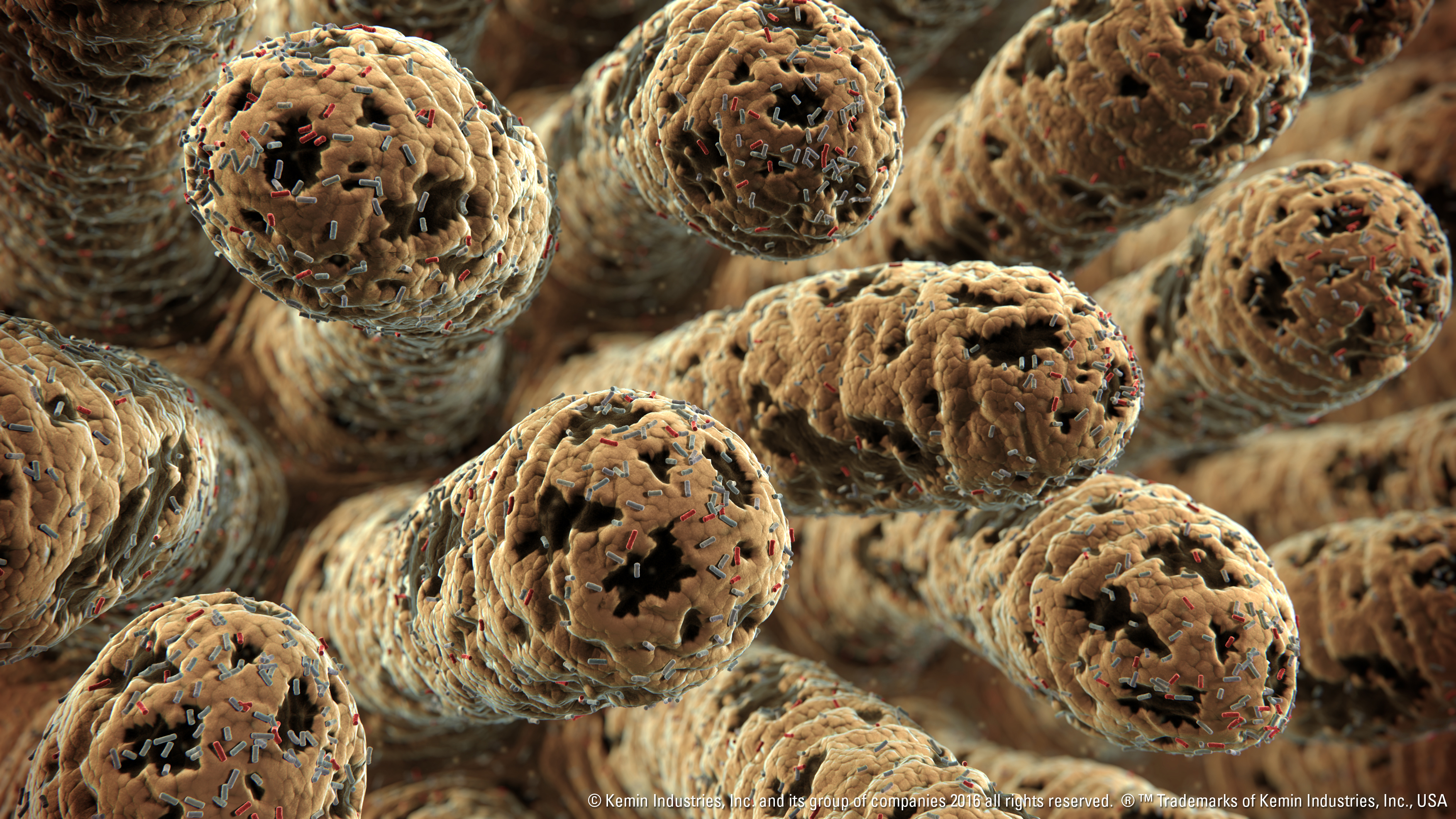While the exact hierarchy is under serious debate in the scientific community, it is agreed that animals' bodies re-prioritize energy utilization, and growth is prioritized below the immune response. When animals experience a shortage of energy due to increased exertion from inflammation, they cannot reach their full genetic potential regarding growth, meat yield, milk yield or eggs.
Inflammation also creates weaker areas of the intestinal walls. This can be seen in necropsies with the naked eye in cases of severe dysbiosis. On a cellular level, the effects can range from improperly sealed tight junctions, over-reduced mucus, loss of gut structure (decreased villi length and crypt death) and even open lesions. These weakened areas can make it easier for pathogens such as Enterococcus cecorum or Campylobacter to translocate past the epithelial wall. While these infections are often present in broilers, they can become a severe problem when they translocate. Additional substances such as mycotoxins or contaminants tend to infect the animal at a higher rate when inflammation has weakened the structures.
The Characterization of Anti-Inflammatory Effects
There are several tests in use to evaluate pro- and anti-inflammatory responses. Natural periods of high inflammation risk can also be used (e.g., weaning in piglets). The best standard to assess anti-inflammatory effects is to induce inflammation, with TNBS colitis for example, and control the harmful effects of a known and defined anti-inflammatory drug such as prednisolone.2 In this cited study, the test substance PB6 spores (direct fed microbial) were directly compared to prednisolone, resulting in positive results through a reduction in inflammation inducing pathogens. Equally specific organic acids and essential oils, such as butyric acid and oregano, have also shown promise in anti-inflammatory effects.
Managing Inflammation
Inflammation affects the health status of the animal, the production process and ultimately, the final product. Anti-inflammatory solutions have a positive impact on economics and health while targeting the exact cause of excessive inflammation. A few factors to consider include genetics, improving intestinal integrity, mycotoxin management and managing the microbiome to prevent dysbiosis. Organic acids, direct fed microbials and phytogenics have shown efficacy in controlling dysbiosis and inflammation in several studies.2,3 Inflammation can only be managed if several of the factors that trigger it are continuously monitored.
References
1Niewold, T. A. 2007. The nonantibiotic anti-inflammatory effect of antimicrobial growth promoters, the real mode of action? A hypothesis. Poult. Sci. 86(4):605-609.
2Foligné, B., et al. 2012. Spores from two distinct colony types of the strain Bacillus subtilis PB6 substantiate anti-inflammatory probiotic effects in mice. Clinical Nutrition. 31(6):987-994.
3Abdelgader, A., et al. 2013. Effects of dietary probiotic inclusion on performance, eggshell quality, cecal microflora composition and tibia traits of laying hens in the late phase of production. Trop. Anim. Health Prod. 45(4):1017-1024.


